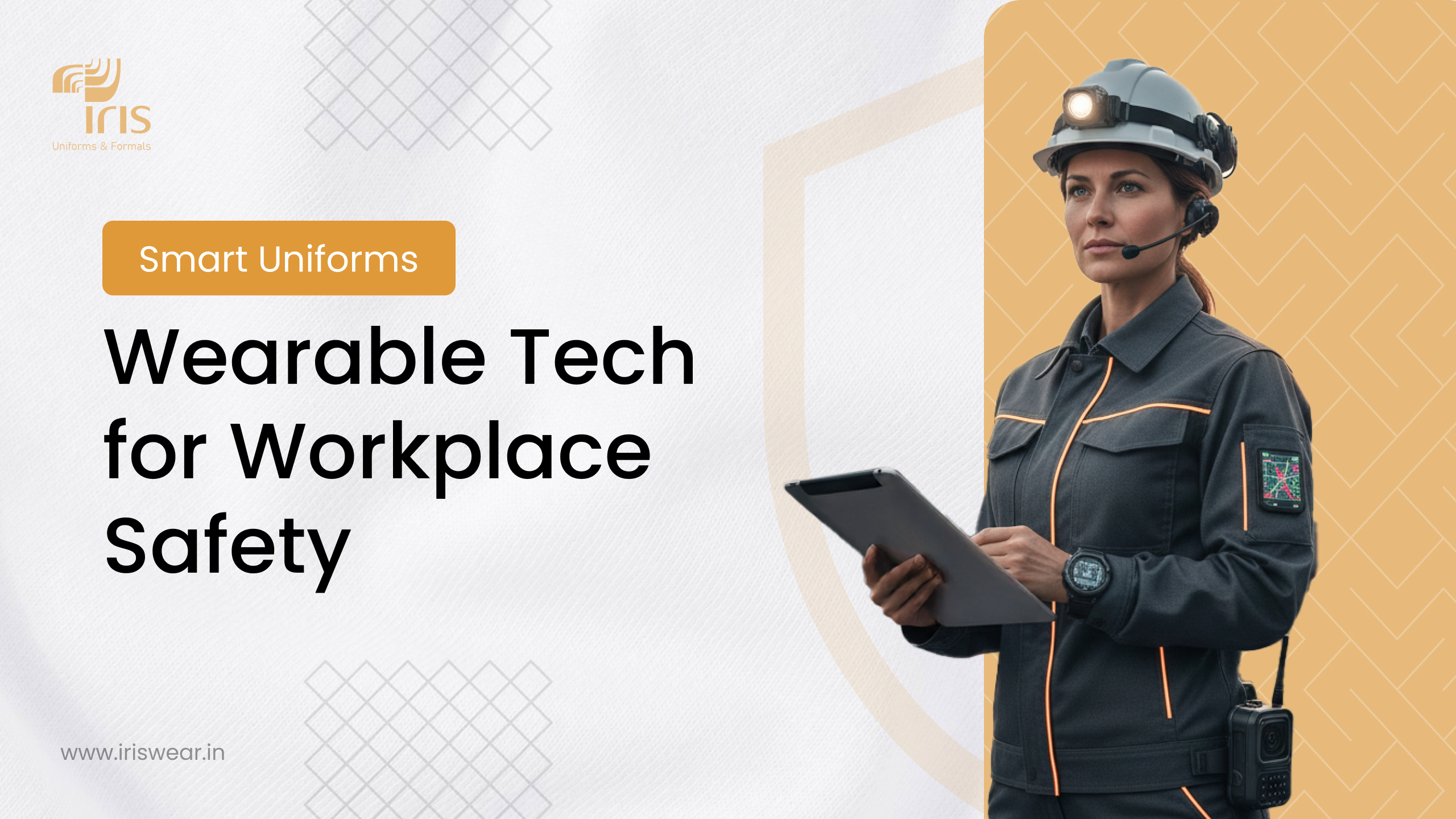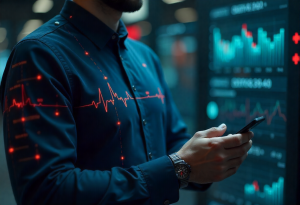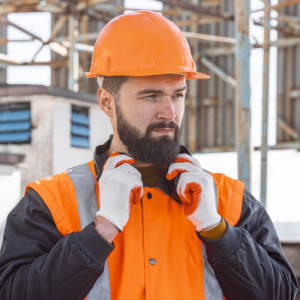
Smart Uniforms: Wearable Tech for Workplace Safety
Remember your working uniform. It’s tough, it looks good, but just material, is that right? Now no more. A revolution of a subtle kind is happening where your uniform is getting intelligent. It’s no longer just a matter of dressing professionally; it’s actually making you safer.
This is not sci-fi high-tech. With what’s going on with small sensors and connectivity, the apparel that people wear to work construction jobs, hospitals, is turning out to be an essential safety device. These integrated clothes, featuring wearable technology in clothing, provide instant feedback that can prevent accidents, monitor health, and enable response to emergencies quicker than the speed of a lightning bolt. For any firm seeking contemporary industrial uniform manufacturers, this is a shift that they cannot elude.
Let’s discover just what these clothes are and how they’re working to make workplaces safer for all.
What Exactly Are Smart Uniforms?
A smart uniform, sometimes called an IoT uniform or “connected clothing,” is simply a piece of clothing with electronics built right into the fabric. The key is that the tech doesn’t get in the way of comfort or style.
Unlike a bulky watch or a clip-on sensor that you might forget or knock off, the technology here is seamless. It is embedded, printed, or stitched in the lining. Its primary purpose is to gather and transmit information regarding the wearer (for instance, his heart rate) or the environment (for instance, levels of harmful gases).
The true advantage is shifting safety from responding to a problem (bandaging a wound) to avoiding the problem before it arises.That requires more than your average clothes maker; that requires uniform providers who recognize quality fabric and clever electronics.

smart tech uniform
Your Uniform’s New Purpose: Real-Time Defense
The intelligent working attire derive their ability from the built-in, unobtrusive technology. These are the attributes that make a typical uniform into a lifesaving garment:
1. Health Monitoring (The Bodyguard)
Your important signs are monitored by microscopic sensors: heart rate, temperature, and level of fatigue.
- Why it Matters: During intense stress, like hot factory work or rough construction labor, these sensors monitor early warning signs of heat stroke or exhaustion before you get sick. The uniform alerts an on-duty supervisor to compel you to take a break.
2. Location and Fall Detection (The Beacon)
GPS and motion sensors are combined such that they have an idea where you’re exactly and if you unexpectedly fall.
- Why it Matters: It is very important for single employees or for people working in massive structures. During a potentially life-saving fall, the system will instantaneously notify your exact location. It conserves emergency response time from minutes of lost looking-around time to seconds of calculating their way to you.
3. Environmental Warning (The Alarm)
These sensors can sense risk beyond what your eyes and nose cannot.
- Why it Matters: In chemical plants or utility work, the uniform can detect deadly amounts of poisonous gases (e.g., carbon monoxide) or monitor radiation exposure. It will vibrate or flash a light immediately to tell you to get out immediately.

Mining and Construction uniform
4. Hands-Free Communication (The Intercom)
Some wearers have tiny, hidden speakers or vibration pads.
- Why it Matters: A manager may send a silent vibration message to an operator running noisy equipment without raising their voice or distracting them. This allows them to convey life-critical safety information in seconds safely.
How it’s Provided: In bringing those functions, there is a specific procedure that involves custom uniform designers collaborating with technology teams.
Who Does It Serve Best? High-Risk Work
Intellectual workwear is making the greatest difference where it matters most.
Mining and Construction
They involve significant threats.
- Fatigue Management: Workers experiencing long, hard shifts can have their fatigue tracked live. It will stop catastrophic accidents from simple human factors.
- Evacuation Safety: In the case of evacuation, location trackers will immediately verify who retreated to a safe point and who remains on site, and thereby targeted and swift rescue operations can be conducted.
Healthcare
Hygiene and efficiency of finding things are the top priority here.
- Hygiene Check: Shirts can ensure staff have cleaned their hands by illuminating when they approach near a sanitizer station. Fast check prevents infection spread.
- Identifying People and Equipment: Miniature badges can label staff or essential equipment (such as defibrillators) immediately, saving vital minutes in an emergency.

healthcare uniform
Food & Beverage (F&B)
It is not only about accidents; it is about compliance.
- Cold Exposure: Uniforms being worn by the workforce handling cold or frozen food can track how long they have been exposed to the cold. This ensures companies follow strict cold-weather safety rules and protects staff from injury.
The Trust Issue: Privacy and Data
If the uniform has your eyes on what is going on with you, questions about privacy and trust are going to arise. If the clothing is collecting data 24 x 7, who owns the data, and what is the data doing?
For smart uniforms to be normalized, organizations will have to address trust honestly:
- Be Open: Employees need to know exactly what the uniform tracks (e.g., heart rate, but not personal conversations) and, most importantly, why. The purpose must be safety and improvement, not spying.
- Keep Data Minimal: Only collect the data absolutely needed for safety. If the goal is checking heat stress, you don’t need to know where the employee is during their personal break.
- Use Tough Security: Data collected by this wearable technology in clothing is private health information. Organizations must enforce strong encryption to keep hackers away.
- Clear Guidelines: There must be written policies presiding over how long the data is retained and who is able to access it. Employees should feel protected by their private health statistics, rather than being critiqued or judged.
If employees perceive that technology is watching them, they will attempt to disable it. When the ultimate goal is safety, the worker’s trust in the technology is a top priority.
What’s Next: Beyond Safety
These modern smart uniforms are first and foremost interested in safety, but the future of the IoT uniform is much more integrated with the entire workspace.
Imagine a worker’s sleeve quietly vibrating to alert them that their gear is dangerously near a risk detected by a building sensor. Or a warehouse worker’s uniform subtly guiding them to the next item on the shelf, minimizing wasted movement.
This is made possible by the creation of standard communication with machines, building systems, and logistics software. This will render intelligent uniforms a requirement for reaching not just zero accidents, but optimal efficiency.
For corporations selecting uniform suppliers today, selecting a provider who understands this vision for the long run is more significant. Whatever you want to spend on smart working clothes is an investment in your staff, your safety strategy, and the efficiencies that will define the new workplace.





